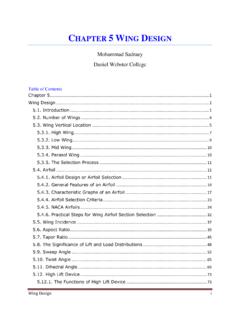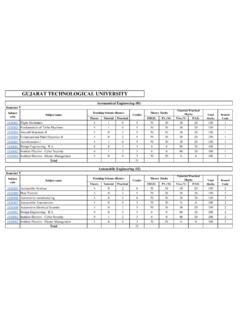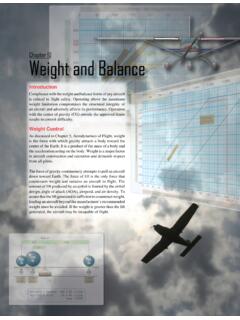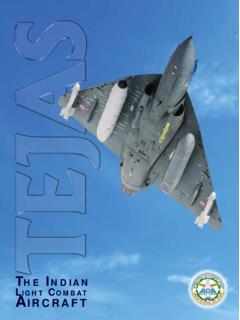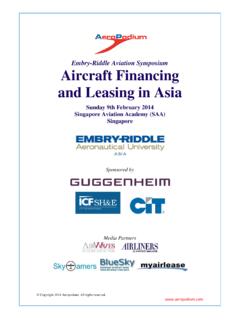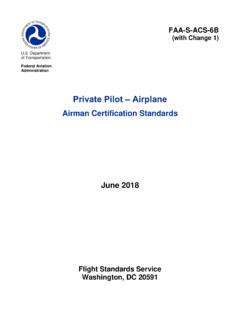Transcription of High Altitude Aerodynamics - thinkbrand.net
1 high Altitude Aerodynamics CRITICAL ASPECTS OF MACH FLIGHT In recent years, a number of corporate jet airplanes have been involved in catastrophic loss of control during high - Altitude / high -speed flight. A significant causal factor in these accidents may well have been a lack of knowledge by the pilot regarding critical aspects of high - Altitude /MACH flight. a. Maximum operating altitudes of general aviation turbojet airplanes have now reached 51,000 feet. It is, therefore, logical to expect these types of accidents to continue unless pilots learn to respect the more critical aspects of high - Altitude high -speed flight and gain as much knowledge as possible about the specific make and model of aircraft to be flown and its unique limitations. b. From the pilot s viewpoint, MACH is the ratio of the aircraft s true airspeed to the local speed of sound.
2 At sea level, on a standard day (59EF / 15EC) the speed of sound equals approximately 660 KIAS or 1,120 feet per second. MACH at sea level is equivalent to a TAS of approximately 498 KIAS ( x 660 K) or 840 feet per second. The temperature of the atmosphere normally decreases with an increase in Altitude . The speed of sound is directly related only to temperature. The result is a decrease in the speed of sound up to about 36,000 feet. c. The sleek design of some turbojet airplanes has caused some operators to ignore critical airspeed and MACH limitations. There are known cases in which corporate turbojet airplanes have been modified by disabling the airspeed and MACH warning systems to permit intentional excursions beyond the FAA certificated Vmo / Mmo limit for the specific airplane. Such action may critically jeopardize the safety of the airplane by setting the stage for potentially hazardous occurrences.
3 D. The compulsion to go faster may result in the onset of aerodynamic flutter, which in itself can be disastrous, excessive G-loading in maneuvering, and induced flow separation over the ailerons and elevators. This may be closely followed by a loss of control surface authority and aileron buzz or snatch, coupled with yet another dangerous phenomenon called MACH tuck, leading to catastrophic loss of the airplane and the persons onboard. e. MACH tuck is caused principally by two basic factors: (1) Shock wave-induced flow separation, which normally begins near the wing root, causes a decrease in the downwash velocity over the elevator and produces a tendency for the aircraft to nose down. (2) Aftward movement of the center of pressure, which tends to unbalance the equilibrium of the aircraft in relation to its center of gravity (CG) in subsonic flight.
4 F. The airplane s CG is now farther ahead of the aircraft s aerodynamic center than it was in slower flight. This dramatically increases the tendency of the airplane to pitch more nosedown. g. Pressure disturbances in the air, caused by an airfoil in high - Altitude / high -speed flight, result from molecular collisions. These molecular collisions are the result of air that moves over an airfoil faster than the air it is overtaking can dissipate. When the disturbance reaches a point at which its propagation achieves the local speed of sound, MACH 1 is attained. One hundred percent (100%) of the speed of sound at MSL with a temperature of 15EC is 760 statute or 660 nautical miles per hour. This speed is affected by temperature of the atmosphere at Altitude . Thus, optimum thrust, fuel, and range considerations are significant factors in the design of most general aviation turbine-powered airplanes which cruise at some percentage of MACH 1.
5 H. Because of the critical aspects of high - Altitude / high -MACH flight, most turbojet airplanes capable of operating in the MACH speed ranges are designed with some form of trim and autopilot MACH compensating device (stick puller) to alert the pilot to inadvertent excursions beyond its certificated Mmo. This stick puller should never be disabled during normal flight operations in the aircraft . i. If for any reason there is a malfunction that requires disabling the stick puller, the aircraft must be operated at speeds well below Mmo as prescribed in the applicable Airplane Flight Manual procedures for the aircraft . j. An airplane s IAS decreases in relation to TAS as Altitude increases. As the IAS decreases with Altitude , it progressively merges with the low-speed buffet boundary where pre-stall buffet occurs for the airplane at a load factor of G.
6 The point where high - speed MACH, IAS, and low-speed buffet boundary IAS merge is the airplane s absolute or aerodynamic ceiling. Once an aircraft has reached its aerodynamic ceiling, which is higher than the Altitude limit stipulated in the Airplane Flight Manual, the aircraft can neither be made to go faster without activating the design stick puller at MACH limit nor can it be made to go slower without activating the stick shaker or pusher. This critical area of the aircraft s flight envelope is known as coffin corner. k. MACH buffet occurs as a result of supersonic airflow on the wing. Stall buffet occurs at angles of attack that produce airflow disturbances (burbling) over the upper surface of the wing which decreases lift. As density Altitude increases, the angle of attack that is required to produce an airflow disturbance over the top of the wing is reduced until a density Altitude is reached where MACH buffet and stall buffet converge ( coffin corner).
7 When this phenomenon is encountered, serious consequences may result causing loss of control of the aircraft . l. Increasing either gross weight or load-factor (G-factor) will increase the low- speed buffet and decrease MACH buffet speeds. A typical turbojet airplane flying at 51,000 feet Altitude at G may encounter MACH buffet slightly above the airplane s Mmo ( MACH) and low speed buffet at MACH. However, only G (an increase of only G) may bring on buffet at the optimum speed of MACH and any change in airspeed, bank angle, or gust loading may reduce this straight and level flight G protection to no protection. Consequently, a maximum cruising flight Altitude must be selected which will allow sufficient buffet margin for the maneuvering necessary and for gust conditions likely to be encountered. Therefore, it is important for pilots to be familiar with the use of charts showing cruise maneuvering and buffet limits.
8 Flightcrews operating airplanes at high speeds must be adequately trained to operate them safely. This training cannot be complete until pilots are thoroughly educated in the critical aspect of aerodynamic factors described herein pertinent to MACH flight at high altitudes. aircraft Aerodynamics AND PERFORMANCE Pilots who operate aircraft at high speeds and high altitudes are concerned with the forces affecting aircraft performance caused by the interaction of air on the aircraft . With an understanding of these forces, the pilot will have a sound basis for predicting how the aircraft will respond to control inputs. The importance of these aerodynamic forces and their direct application to performance and the execution of aircraft maneuvers and procedures at Altitude will be evident. a. Wing Design (1) The wing of an airplane is an airfoil or aircraft surface designed to obtain the desired reaction from the air through which it moves.
9 The profile of an aircraft wing is an excellent example of an efficient airfoil. The difference in curvature between the upper and lower surfaces of the wing generates a lifting force. Air passing over the upper wing surface moves at a higher velocity than the air passing beneath the wing because of the greater distance it must travel over the upper surface. This increased velocity results in a decrease in pressure on the upper surface. The pressure differential created between the upper and lower surfaces of the wing lifts the wing upward in the direction of the lowered pressure. This lifting force is known as induced lift. Induced lift may be increased, within limits, by: (i) Increasing the angle of attack of the wing or changing the shape of the airfoil, changing the geometry, , aspect ratio. (ii) Increasing the wing area velocity.
10 (iii) Increasing the free-stream (iv) A change in air density. (2) The pilot may have only varying degrees of control over these factors. Thus, the pilot must keep firmly in mind that an aircraft will obey the laws of physics just as precisely at its high speed limits as it does during a slower routine flight, and that regardless of wing shape or design, MACH range flight requires precise control of a high volume of potential energy without exceeding the critical MACH number or MACH critical. (3) MACH critical is important to high - speed Aerodynamics because it is the speed at which the flow of air over a specific airfoil design reaches MACH 1, but the most important effect is formation of a shock wave and drag divergence. (4) Sweeping the wings of an airplane is one method used by aircraft designers to delay the adverse effects of high MACH flight and bring about economical cruise with an increase in the critical MACH number.
